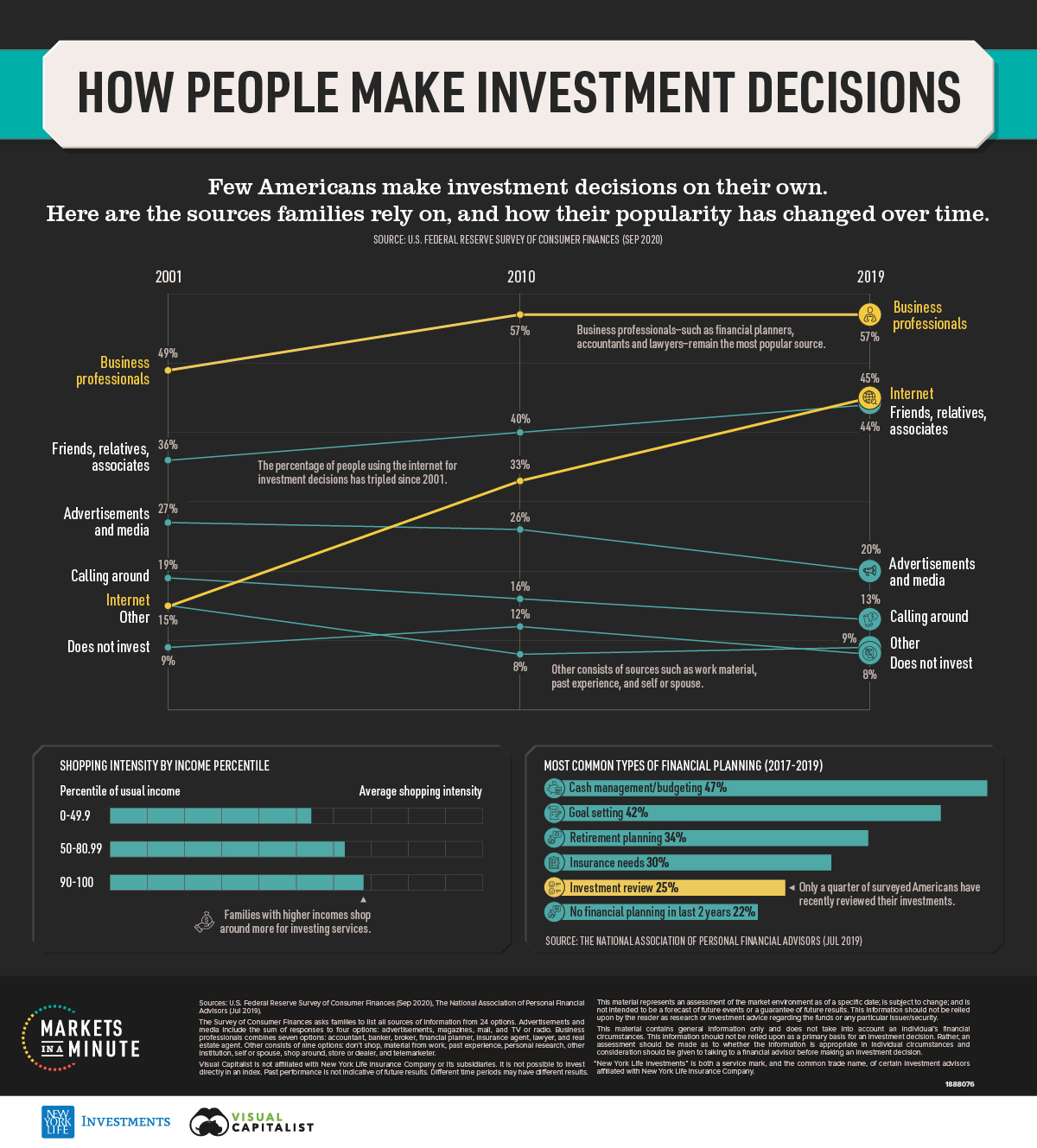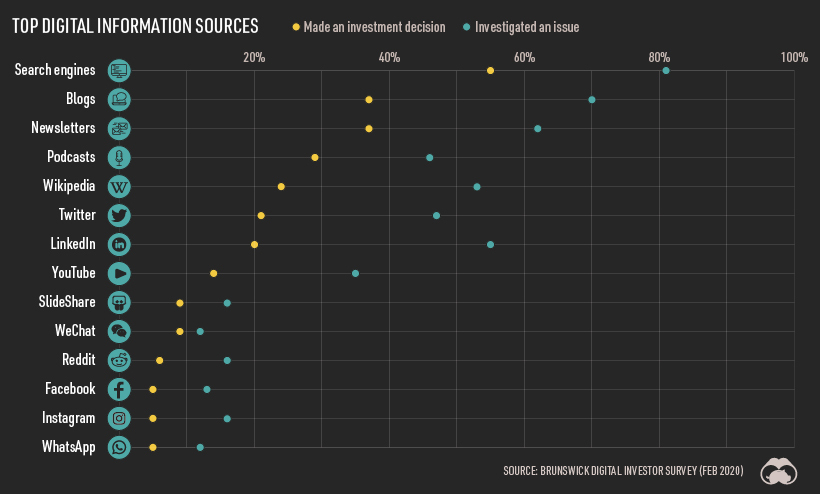
When you’re making investment decisions, there can be a lot of different things to consider. Which types of asset classes should you hold? How much risk are you comfortable with? How much will you need to retire?
It’s no surprise, then, that few Americans make these decisions on their own. This Markets in a Minute from New York Life Investments shows which sources of information families rely on for investment decisions, and how their popularity has changed over time.
The Main Sources of Investment Information Over Time
According to data from the U.S. Federal Reserve Survey of Consumer Finances, here is the percentage of families who reported using each source.
| Source | 2001 | 2010 | 2019 |
|---|---|---|---|
| Business professionals | 49% | 57% | 57% |
| Internet | 15% | 33% | 45% |
| Friends, relatives, associates | 36% | 40% | 44% |
| Advertisements and media | 27% | 26% | 20% |
| Calling around | 19% | 16% | 13% |
| Other | 15% | 8% | 9% |
| Does not invest | 9% | 12% | 8% |
Other consists of nine options: don’t shop, material from work, past experience, personal research, other institution, self or spouse, shop around, store or dealer, and telemarketer.
Business professionals, such as financial planners, accountants, and lawyers, remain the most relied upon source. Their popularity has remained stable since 2010.
Traditional advertisements and media, such as through TV and radio, have dropped in overall popularity. The percentage of Americans who call around to financial institutions for investment information has also declined.
Conversely, friends, relatives, and associates have grown in popularity as an information source. Meanwhile, the internet has been the fastest-growing source, used by three times more families in 2019 compared to 2001.
Digital Investment Decisions
A separate survey conducted by consulting firm Brunswick revealed the specific places people go online when making investment decisions.

Search engines, blogs, and specialist email newsletters are the most popular sources. Among blogs, Seeking Alpha is the most popular, used by 34% of those surveyed.
Twitter and LinkedIn are the most commonly-used social media platforms. The proportion of investors using Twitter for information has grown by 36 percentage points since 2014.
Implications for Investors and Advisors
If you’re an investor, this information can help you gauge how your research process compares to the general American population. Is your preferred information source popular with others, or is it less common? For those who have yet to get started investing, this may give you some ideas on where you can start looking for information.
If you’re an advisor, these research trends can have important implications for your business. While business professionals remain the most-used source, other sources of information are shifting. Traditional advertising and inbound calls from potential clients continue to be less common. Instead, advisors may want to shift their focus to building an online presence and increasing referrals from existing clients.